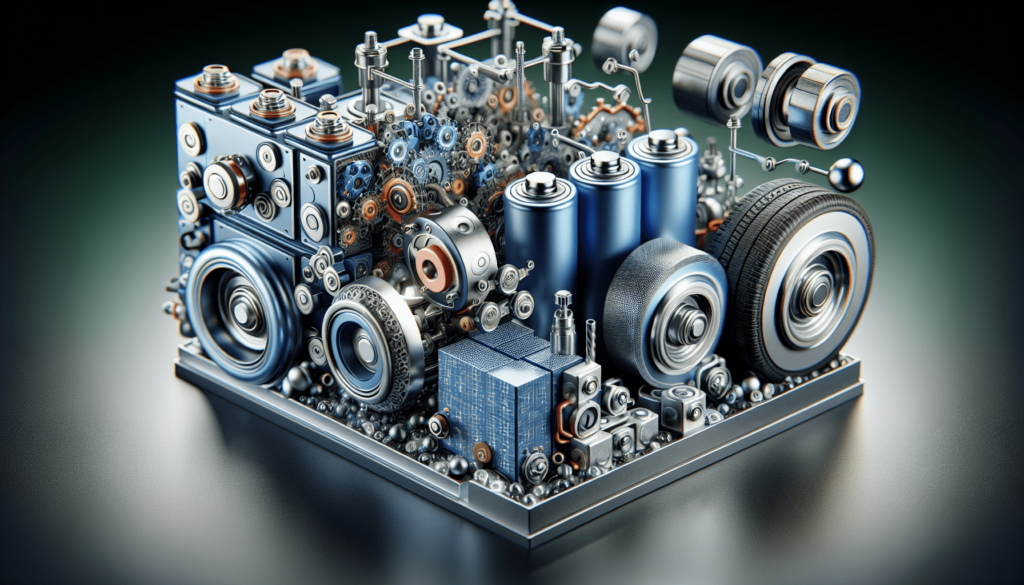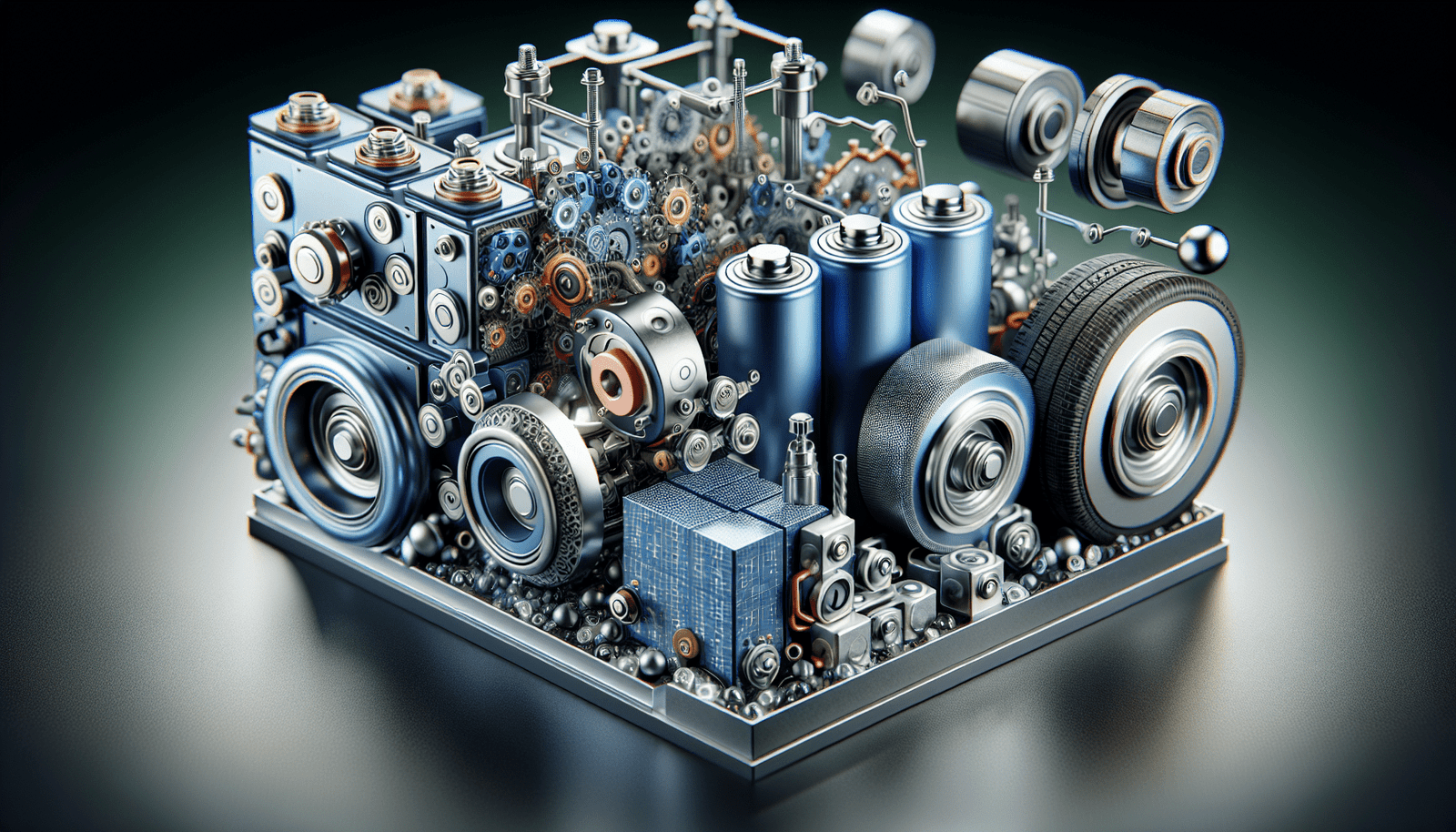Have you ever wondered what materials are used to create the powerful batteries that keep electric vehicles running? Well, wonder no more! In this article, we will explore the fascinating world of electric vehicle battery production and uncover the key materials that play a crucial role in their development. From lithium-ion to nickel and cobalt, prepare to be amazed by the materials that make electric vehicles a true marvel of modern technology. So, let’s dive in and discover the secrets behind these incredible batteries!
Lithium-Ion Batteries
Lithium-ion batteries are the powerhouse behind electric vehicles, providing the energy needed for them to run efficiently. These batteries are composed of various materials that work together to store and release electricity. Understanding the components and their roles is crucial in comprehending the functioning of lithium-ion batteries.
Lithium
Lithium is a key element in the production of electric vehicle batteries. It is known for its exceptional properties that make it ideal for battery production. Lithium is extremely lightweight, which helps minimize the overall weight of the battery pack. As a result, electric vehicles become more energy-efficient and have a longer driving range. Additionally, lithium has an impressive electrochemical potential, allowing it to store and release electricity effectively.

Cobalt
Another vital component in lithium-ion batteries is cobalt. Cobalt plays a crucial role in enhancing battery performance. With its high energy density, cobalt allows the battery to store a large amount of energy in a relatively small space. This translates to longer battery life and improved vehicle range. Cobalt also contributes to the stability and safety of the battery, preventing overheating and potential hazards.
Nickel
Nickel is yet another essential material used in lithium-ion batteries. It significantly impacts the battery’s performance by improving its energy density. Higher nickel content in the battery increases its storage capacity, allowing electric vehicles to travel longer distances on a single charge. By optimizing the energy efficiency of the battery, nickel helps enhance the overall performance and usability of electric vehicles.

Manganese
Manganese is an important component that contributes to the efficiency of lithium-ion batteries. It acts as a stabilizer, reducing the risk of battery failure and improving its lifespan. Additionally, manganese enhances the battery’s charge acceptance, enabling faster charging times. By incorporating manganese into the battery, electric vehicles can be charged more quickly, making them more convenient for daily use.
Graphite
Graphite is a material commonly used in the production of battery anodes. The anode is the electrode through which electric current flows into the battery. Graphite possesses excellent conductivity, allowing efficient transfer of electricity within the battery. Its structural properties also ensure stability, preventing the battery from experiencing physical deformations. By utilizing graphite as an anode material, lithium-ion batteries can operate reliably and deliver optimal performance.
Aluminum
Aluminum is crucial in the construction of lithium-ion batteries, primarily in the case or housing. Aluminum possesses exceptional qualities that make it the preferred material for this purpose. Its lightweight nature helps reduce the overall weight of the battery, improving the energy efficiency of electric vehicles. Furthermore, aluminum offers excellent heat dissipation properties, ensuring that the battery remains cool and operates efficiently, even under demanding conditions.
Copper
Copper is an essential element in battery manufacturing. It is commonly used in the electrical connections within the battery. Copper’s exceptional conductivity facilitates the efficient flow of electric current, minimizing energy loss and maximizing the battery’s efficiency. By using copper in battery production, electric vehicles can benefit from improved power transmission and enhanced overall performance.
Other Battery Components
Apart from the materials mentioned above, lithium-ion batteries also include other crucial components that contribute to their functionality and performance.
Electrolyte
The electrolyte is a liquid or gel-like substance that allows the flow of ions between the battery’s electrodes. It acts as a medium for the transfer of electrical charge, enabling the battery to function effectively. The electrolyte used in lithium-ion batteries typically consists of lithium salts dissolved in organic solvents. The selection and formulation of the electrolyte significantly impact the battery’s performance, safety, and cycle life.
Separator
The separator is a thin, porous material that separates the cathode and anode in a battery. Its primary purpose is to prevent short circuits while allowing the passage of ions between the electrodes, enabling the flow of electricity. The separator must possess high porosity, low electrical resistance, and excellent resistance to chemical reactions to ensure the battery’s stability and safety.
Additional Metals
In addition to the main components, lithium-ion batteries may also contain other metals that contribute to their function and performance. One example is molybdenum, which is used as a catalyst in the battery’s various chemical processes. Another metal is cobalt oxide, which is sometimes added to enhance the battery’s electrochemical performance.
In conclusion, lithium-ion batteries are a result of a careful combination of various materials and components, each playing a crucial role in their functionality and performance. Lithium, cobalt, nickel, manganese, graphite, aluminum, and copper are the main materials utilized in the production of these batteries. Understanding the properties and roles of these materials helps to comprehend the technology behind electric vehicle batteries and highlights the continuous efforts in enhancing battery performance and efficiency.

